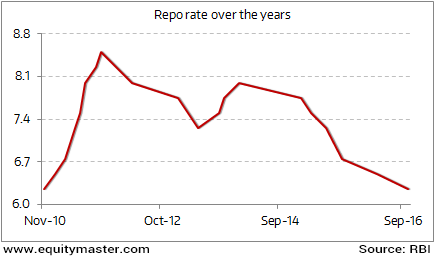Home » All posts
Monday, 3 April 2017
Wednesday, 29 March 2017
A Corporate Story for Every ever person
March 29, 2017 prabhakardalvi
🐜 She produces a lot and she was happy.
The Chief, 🐯 a Tiger, was surprised to see that 🐜 the Ant was working without supervision.
🐯 He thought if the 🐜 Ant can produce so much without supervision, wouldn’t she produce even more if she had a supervisor!
So 🐯 he recruited a 🐝 Bee who had extensive experience as 👷 supervisor and who was famous for 📝 writing excellent reports.
The 🐝 Bee’s first decision was to set up a 🔔 clocking in attendance system.
🐝 He also needed a secretary to help him write and type his reports and he recruited a 🐇Rabbit , who managed the archives and monitored ☎ all phone calls.
🐯 The Tiger was delighted with the 🐝 Bee's reports and asked him to produce 📊 graphs to describe production rates and to analyse 📉 trends, so that he could use them for 📁 presentations at Board‘s meetings.
So the 🐝 Bee had to buy a 💻 new computer and a Laser printer and recruited a 🐈 Cat to manage the 🌐 IT department.
The🐜 Ant, who had once been so productive and relaxed, hated this new plethora of paperwork and meetings which used up most of her time…!
🐯 The Tiger came to the conclusion that it was high time to nominate a person in charge of the department where the 🐜 Ant worked.
The position was given to the 🐒 Monkey, whose first decision was to buy an Air Conditioner and an ergonomic 💺 chair for his office.
The new person in charge, 🐒 the Monkey, also needed a 💻 computer and a personal assistant , who he brought from his previous department, to help him prepare a 📑 Work and 📃 'Budget Control Strategic Optimisation Plan' …
The Department where the 🐜 Ant works is now a sad place, where nobody laughs anymore and everybody has become upset...
It was at that time that the 🐝 Bee convinced the boss, 🐯 the Tiger; of the absolute necessity to start a climatic study of the environment .
Having reviewed the charges for running the 🐜 Ant’s department , the 🐯 Tiger found out that the Production was much less than before.
So he recruited the 🐤 Owl, a prestigious and renowned consultant to carry out an audit and suggest solutions.
🐤 The Owl spent three months in the department and came up with an enormous report, in several volumes, that concluded...
“ The Department is overstaffed ...”
Guess who the 🐯 Tiger fires first?
Of course, 🐜 the Ant.........,
"....because she showed lack of motivation and had a negative attitude. "
"The Characters in this fable are fictitious; any resemblance to real people or facts within the Corporation is pure coincidence only…" i am just sharing... I am not the Author.
Note : Any blog OR content suggestion you have , please mail me on prabhakara.dalvi@gmail.com
Interactive content - the featured story on the front page
March 29, 2017 prabhakardalvi
Now, The New York Times has published interactive content before — a number of interactive infographics, such as How Family Income Predicts Children’s College Chances, and several simple quizzes, such as a Did a Human or a Computer Write This? and political columnist Gail Collins’ satirical Fourth of July Quiz. But as far as I know, this was the first time they’d created an assessment with this much utility and featured it as the top story on their front page.
So what does this have to do with marketing and marketing technology?
Don’t worry, not planning on becoming a media commentator. But there are clearly many parallels between publishers and marketers these days. Primarily, both are struggling in The Great Content Wars — how to grab people’s attention and engage them in some meaningful way, so as to build and maintain a monetizable brand, in a world of essentially infinite content.
To break through the deafening noise, ironically, each has been advised to act more like the other. Native advertising, for better and worse, is one product of that rendezvous.
While there are still fundamental differences between marketers and publishers — underlying business models being the most obvious and important — there is enough overlap in their shared mission to produce and distribute content effectively that there are opportunities to cross-pollinate ideas from one to the other.
Interactive content really started taking off with BuzzFeed’s Which State Do You Actually Belong In? quiz, which has garnered over 40 million page views — and high praise from Mary Meeker of KPCB for the way they’re “reimagining content.” Marketers took the cue of its popularity, and have started producing quizzes as a more regular part of their own content marketing and demand generation programs. For instance, this example of a lead generation quiz by Orbitz for Business.
But simple quizzes only go so far. Most of them have more of an amusing, entertainment bent and offer relatively limited utility to participants. Marketers who have taken Jay Baer’s concept of Youtility to heart have pushed to develop more valuable interactive content for prospects. Two good examples are Dell’s Mobility Assessment and the quiz (which is really an assessment) embedded in this Pearson interactive e-book.
These are not sugary, snackable content puffs for a quick laugh and a share. These are meaty assessment tools that require thoughtful user engagement and deliver in-depth consultative results. (I would also suggest that they are ideal vehicles for improving sales and marketing alignment — but as I’ve already disclosed, I’m biased on this subject.)
The New York Times assessment on their home page is a significant step in that direction in the world of publishers though. I can’t think of any other mainstream news publisher that has built something as sophisticated as this assessment as a way of telling a front-page story.
This is definitely not boilerplate interactive content.
It will escalate more “software thinking” in content marketing design — which is an opportunity for companies to differentiate themselves online and an opportunity for tech-savvy marketers and marketing technologists to demonstrate the relevance and power of their hybrid skillsets.
It’s one more step along in our journey from communications to experiences.
Note : Any blog OR content suggestion you have , please mail me on prabhakara.dalvi@gmail.com
Rules for marketing like a billion-dollar by Jeremy Epstein
March 29, 2017 prabhakardalvi
Tuesday, 7 February 2017
Todays Stock Market Summary Chart Of Friday February 7, 2017
February 07, 2017 prabhakardalvi
Remember that banks did cut rates when they received a flood of demonetised notes. They are highly unlikely to cut rates without a repo rate cut from the RBI. Stay tuned for our analysis on the policy tomorrow.

Friday, 3 February 2017
Todays Stock Market Summary Chart Of Friday February 3, 2017
February 03, 2017 prabhakardalvi
- 12 April 2013. Infosys corrected by a remarkable 22%, wiping off Rs 357 billion in investor wealth. The reason: disappointing revenue guidance.
- 17 October 2014. Tata Consultancy Services (TCS) corrected by 8.5% in a single session. The reason: disappointing revenue guidance.
- In Trump's first month as president, Infosys and TCS corrected by 8% and 7% respectively. The reason: prospects of disappointing revenue guidance.
"Over the long term, the stock market news will be good. In the 20th century, the United States endured two world wars and other traumatic and expensive military conflicts; the Depression; a dozen or so recessions and financial panics; oil shocks; a fly epidemic; and the resignation of a disgraced president. Yet the Dow rose from 66 to 11,497". - Warren Buffett
Thursday, 2 February 2017
Todays Stock Market Summary Chart of the Day Thursday February 2, 2017
February 02, 2017 prabhakardalvi
The markets reacted strongly with a near 500-point gain for the Sensex yesterday. But how should smart investors react to this budget? The dust settles and we take a closer look at it, one conclusion is unavoidable: Despite all of the speculation, hype, and hoopla in the days leading up to the budget, there's nothing really earth-shattering about it. It's just business as usual on most counts.
"Whether we're talking about socks or stocks, I like buying quality merchandise when it is marked down" - Warren Buffett
Apple / BSE Sensex / budget 2017 / nse
FM Arun Jaitley said creating oil giant for compete with gloabl majors
February 02, 2017 prabhakardalvi
India's FM Arun Jaitley said on Wed, 1st Feb 2017 on Budget, planning for creating giant oil company combine with state-owned firms for compete with global majors in acquiring foreign assets.
Struggling for raise local oil production and import about 80 percent. Prime Minister Modi try cutting to 67 percent by 2020. India is replacing China for consumption of Oil demand. India have oil companies like IOC, ONGC, HP etc.,
FM Arun Jaitley / HP / IOC / ONGC
Tuesday, 24 January 2017
Todays Stock Market Summury - Chart of the Day 24 Jan 2017
January 24, 2017 prabhakardalvi
- Autos - India: 18 cars per 1,000; US: 800 cars per 1,000
- Footwear - India: 1.66 pair per annul; developed nations: 6-7 pairs p.a.
- Broadband - India: 1.4% of the total population; US: 28% of the total population
- Airports - India: 464; US: 15,079
Lead generation Marketing - change your view for Digital world
January 24, 2017 prabhakardalvi
In this blog, we discuss revolutionary lead generation tactics for better double-figure ROI. We focus global trend, techniques on social media like Facebook, twitter etc.
 |
| Lead generation Marketing - change your view for Digital world |
Brand awareness Vs Lead generation
Tuesday, 17 January 2017
Make Big Money in Cyclical Stocks in Intra, BTST, Client Mode, short Term
January 17, 2017 prabhakardalvi
 |
| Cyclical Stocks in Intra, BTST, Client Mode, short Term |
Avoid industries where competition from new entrants is heating up.
Identify the best companies in the industry using fundamental analysis.
Narrow down the ones with the healthiest balance sheets and cost-conscious managements.
Eliminate those with debt to equity higher than 1.
Don't pay more than 1.5 times book value.
Invest for the long term (3-5 years) to let the cycle play out.
This is not an exhaustive list. But it is more than enough to place you head and shoulders above most investors.
"A prediction about the direction of the stock market tells you nothing about where stocks are headed, but a whole lot about the person doing the predicting." - Warren Buffett